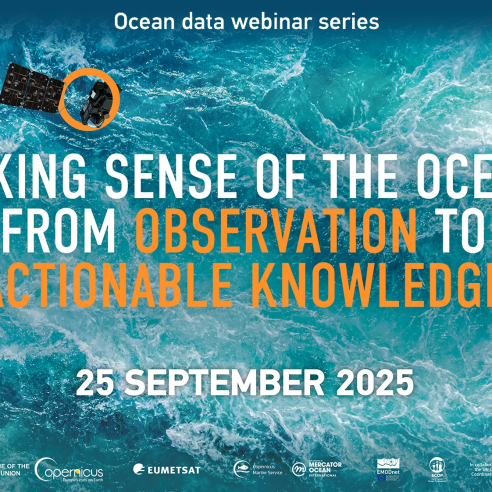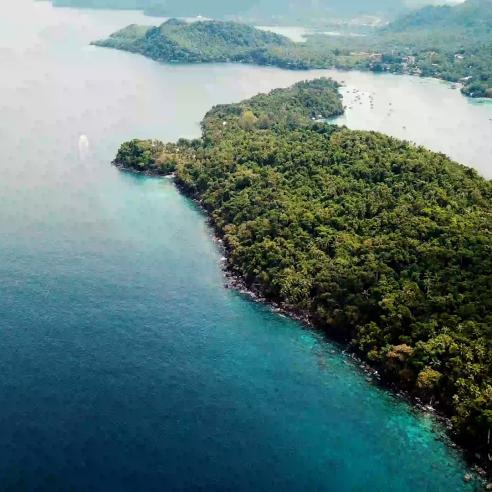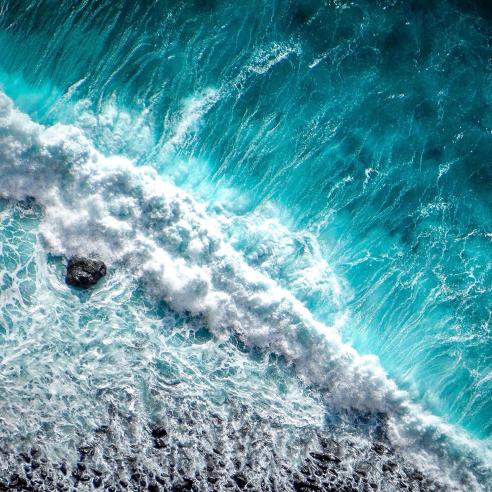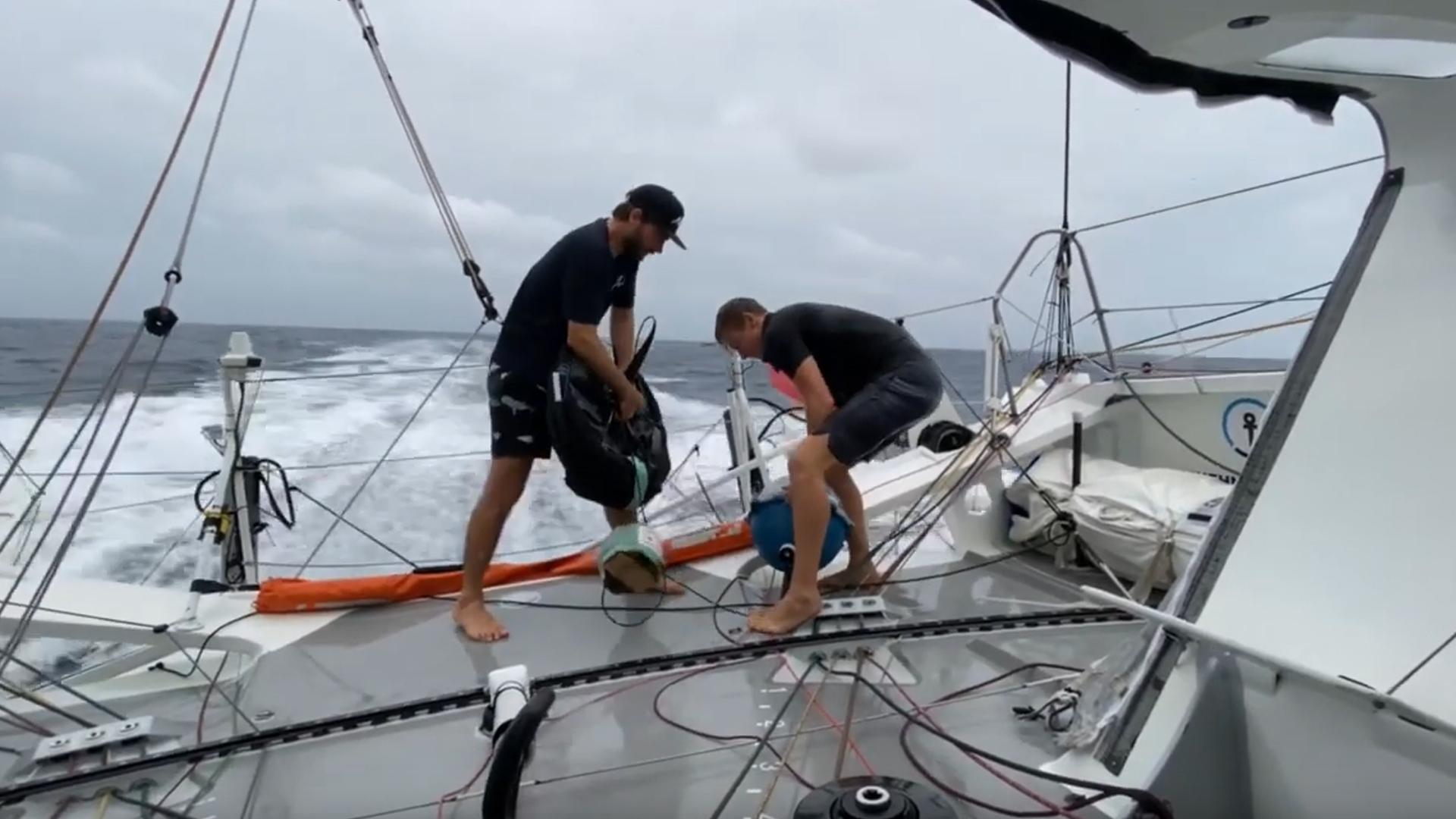
Sailors drop off ocean-monitoring buoys during trans-Atlantic race
An innovative partnership between ocean scientists and sailors.

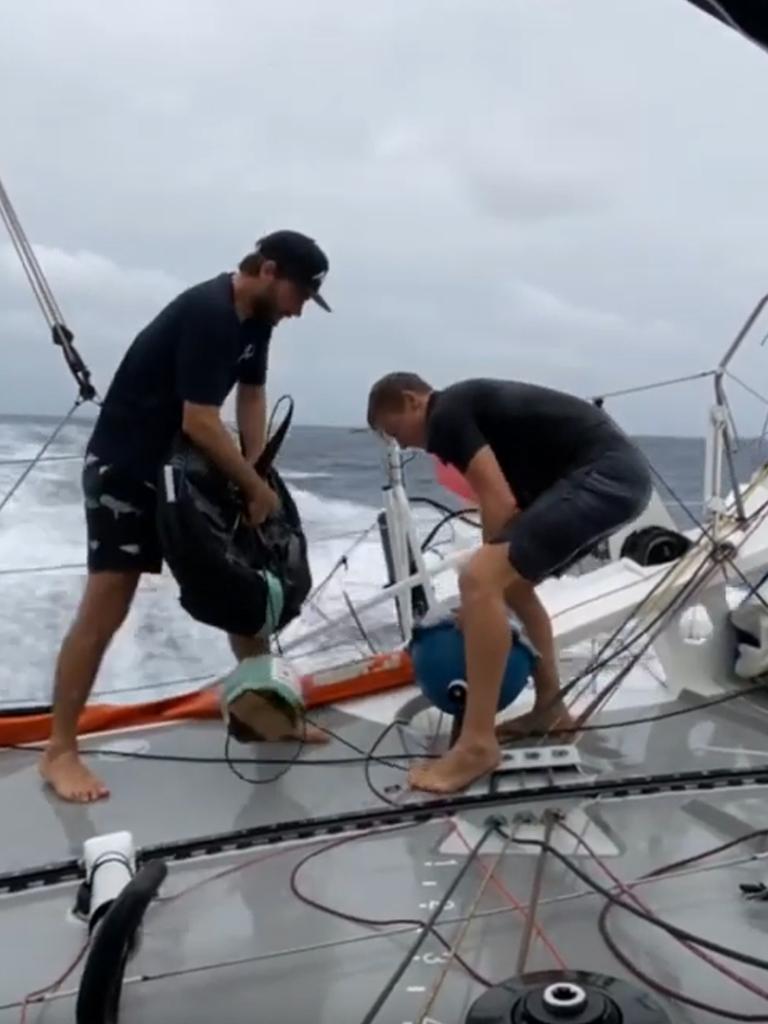
The Transat Jacques Vabre yacht race is one of the big events in the offshore sailing calendar and is a tough race from Le Havre, France, across 8000km of the Atlantic Ocean to Salvador de Bahia, on the Brazilian coast.
14 January 2021
28 April 2020
This year, a total of 59 yachts started the race in Le Havre on 27 October and their positions and various fortunes can be followed online as they cross the Atlantic Ocean, following the old coffee trading route between France and Brazil.
In addition to battling storms, dodging the doldrums and hoping to avoid large floating objects, some of the yachts have an additional mission: to help scientists monitor the oceans.
Three yachts are dropping off crucial ocean monitoring buoys in poorly-monitored parts of the Atlantic Ocean and some yachts are also carrying onboard instruments to collect ocean and atmosphere data while they are racing.
TRUSTED buoys
Boris Herrmann and co-skipper Will Harris (Malizia) and Stéphane le Diraison and co-skipper François Guiffant (Time for Oceans) are deploying two special drifting buoys that have been built to record and then transmit high resolution sea surface temperature measurements.
These buoys are known as TRUSTED buoys and have been developed in a Copernicus-funded project for EUMETSAT.
Watch Boris Herrmann and Will Harris deploy a trusted buoy:
The buoys are part of a fiducial reference system that provides high resolution measurements of sea surface temperature to validate data from the Sea and Land Surface Temperature Radiometers (SLSTR) onboard Europe’s Copernicus Sentinel-3A- and -B satellites.
Anne O’Carroll, Remote Sensing Scientist for Surface Temperature Radiometry at EUMETSAT said, “The TRUSTED buoys are being deployed when crews enter pre-defined, undersampled zones near the equator. The SST measurements in data sparse regions help us to improve the satellite algorithms in these areas.
So far we are about half way through deploying the 100 TRUSTED drifting buoys with 55 deployed up to the end of September.
The precision of the HRSST sensors on board these buoys means that they are able to detect tiny variations in temperature with good confidence and this information is critical when we need to validate the sea surface temperature data we get from the Sentinel-3 satellites.”
The TRUSTED buoys also have additional benefits, as O’Carroll explained, “The buoys contain extra sensors such as a near-surface water pressure sensor, and some collect high-frequency data, meaning that for the first time we are able to derive the depth of the drifting buoy in the ocean and study the near-surface ocean temperature variability and how this impacts the satellite retrievals.
Improvements in uncertainties, metadata and quality flagging are all important aspects of this project needed towards Fiducial Reference Measurements.”
The buoy deployments are usually performed through coordination with shipping companies and oceanographic cruises. However, this time the WMO-IOC Joint Technical Commission for Oceanography and Marine Meteorology in situ Observations Programme Support Centre (JCOMMOPS) coordinated these unique opportunities with the yachts.
The data the buoys collect will be transmitted to the Global Telecommunication System (GTS) of the World Meteorological Organization (WMO) for inclusion in numerical weather forecasting models and it will also be available through the Copernicus Marine Environment Monitoring Service in situ data portal.
Sea surface temperature measurements – from satellites and buoys – are important over short timescales to monitor dynamic ocean features such as eddies, coastal currents and upwelling regions. They provide the essential boundary conditions for weather and ocean forecasting.
While over longer periods, sea surface temperature data help scientists to monitor the distribution of heat within the Earth system and to track global and regional sea surface temperature trends.

Argo float in the Bay of Biscay
As well as the TRUSTED buoys, Alexia Barrier and co-skipper Joan Milloy of 4my Planet, have deployed an Argo profiling float on the morning of October 28th, off the Bay of Biscay, France.
The Argo profiling float they deployed will measure temperature, salinity and pressure profiles down to 2,000 m below the surface of the Atlantic Ocean during ten-day cycles. When the float surfaces, it will use the Argos satellite telemetry system to relay collected data. The data will be processed by the CLS Argos data processing centre and be posted to the GTS for integration into climate and weather prediction models.
The deployment of these ocean monitoring systems is made possible because of an innovative partnership between the offshore sailing IMOCA class and UNESCO’s Intergovernmental Oceanographic Commission to equip competitive sailing boats with state-of-the-art scientific equipment to observe the ocean and collect data for forecasting and climate modelling.
About the TRUSTED project
The TRUSTED project team is led CLS and, includes NKE Instrumentation, who are designing and building the buoys; the SHOM (the Naval Hydrographic and Oceanographic Service), which is in charge of calibration; Météo-France, which will look after deployment; BSH (the Federal Maritime and Hydrographic Agency of Germany) which will provide a tethered reference measurement, and JCOMMOPS (WMO-IOC Joint Technical Commission for Oceanography and Marine Meteorology’s In-situ Observing Program’s Support Center), which will provide the metadata processing and visualisation tools to monitor the deployments.Find out more about the TRUSTED project.

Useful links:



